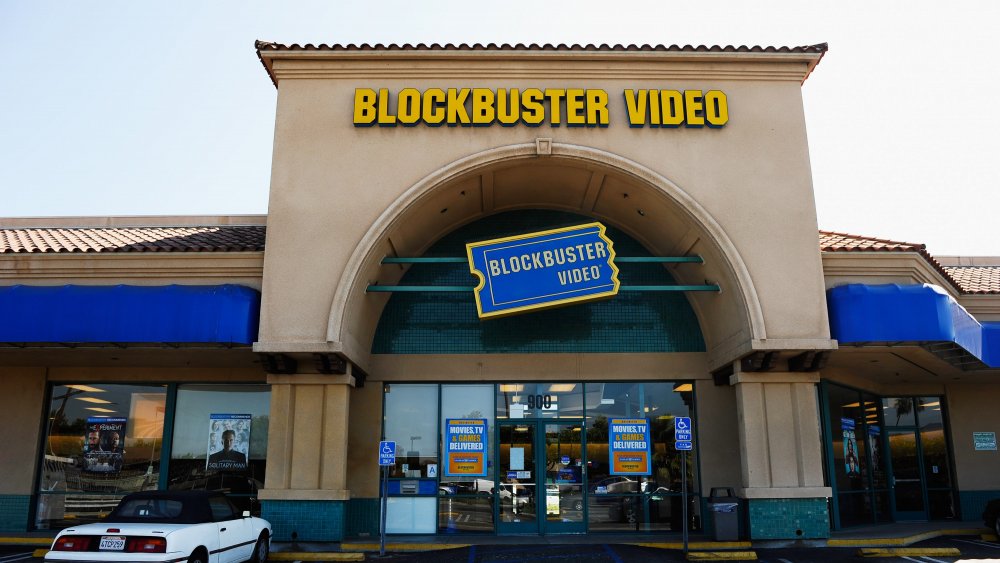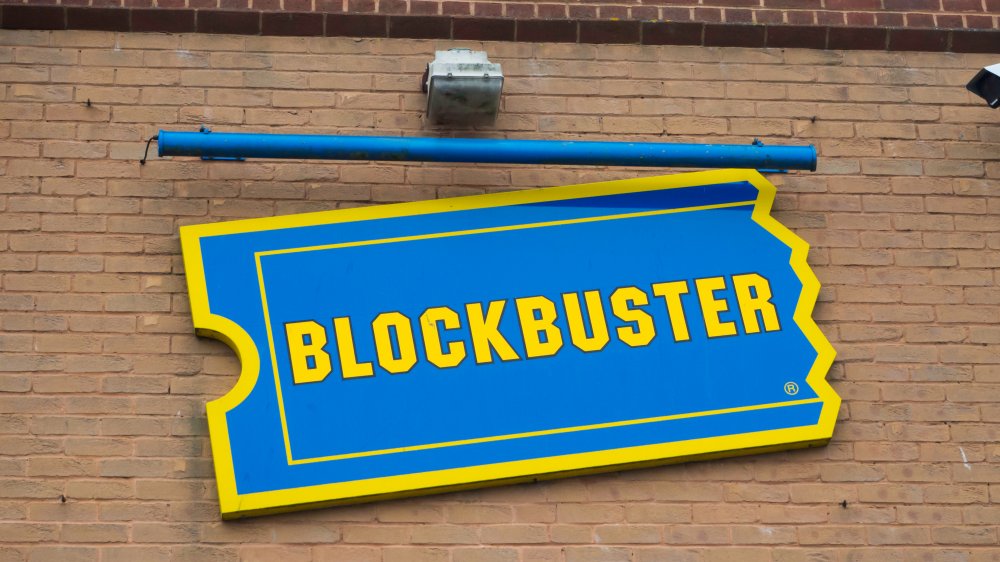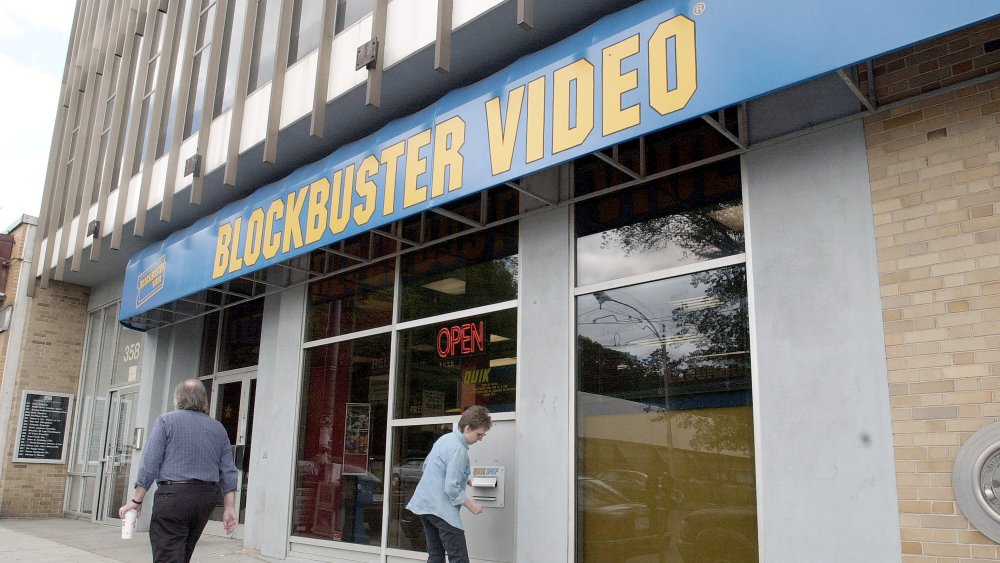The Real Reason Blockbuster Disappeared
Blockbuster was the old-school version of Netflix before the streaming service became a 21st century symbol of home entertainment. At its peak, the movie rental chain had more than 9,000 stores around the world, 84,000 employees, 65 million members, and was worth $3 billion dollars (via Business Insider). That may not sound like a company that would spiral into bankruptcy — but it did just that almost as quickly as it grew.
Blockbuster first opened on October 19, 1985, in Dallas, Texas, according to History. Then, most video stores were small, mom-and-pop shops, but Blockbuster had a vault containing 8,000 tapes and a computerized check-out process. The store was founded by David Cook, who had gotten his start by providing software services to Texas' oil and gas industry. He had seen the possibilities offered by the video rental business, and sure enough, he was able to add three more stores the next year.
Netflix had approached Blockbuster to cut a deal
Two years after it opened its first store, Blockbuster received $18.5 million from a group of investors, including Wayne Huizenga, in return for voting control. But while the partnership brought in cash, it didn't result in business harmony — and after just two months, Cook left, leaving Huizenga in control. It was under Huizenga that Blockbuster decided to take on an aggressive expansion plan by buying out existing rental chains, and literally opening one new store a day. By 1988, Blockbuster had become the country's number-one video rental chain, with 400 stores around the country (via Business Insider).
By 2000, Blockbuster was on top of the video rental industry; it had thousands of locations and a large marketing budget. It was about this time that a man named Reed Hastings, founder of a startup called Netflix, came to Blockbuster's then-CEO John Antioco and his team with a proposal: Netflix would run Blockbuster's brand online, and Blockbuster would promote Netflix in its stores. But Hastings left without a deal (via Forbes).
Blockbuster disappeared due to a series of expensive missteps
What wasn't apparent at the time was that Blockbuster had boosted its balance sheet by charging its customers late fees — and these fees were a big part of Blockbuster's revenue model. While Netflix was an upstart, it was also a disruptor. It was an online business with no real shopfront; it only offered subscriptions, and it did away with the late fees because customers were allowed to hold on to and watch a video as long as they liked before they had to return it. To compete with Netflix, not only did Blockbuster have to change the way it did business, it also had to do away with a revenue stream (via Forbes).
While the brand eventually managed to launch its Blockbuster Online in 2004, it wasn't enough to keep investors happy. They launched a boardroom fight that the company's management eventually lost. In an article for the Harvard Business Review, Antioco said that the brand ultimately succumbed to a series of bad business decisions, including price increases for online customers and an attempt to take over failed appliance retail chain Circuit City. And 25 years after it started, the brand was no more. Netflix, who originally wanted to ride on Blockbuster's success is today worth nearly $200 billion (via Forbes).


